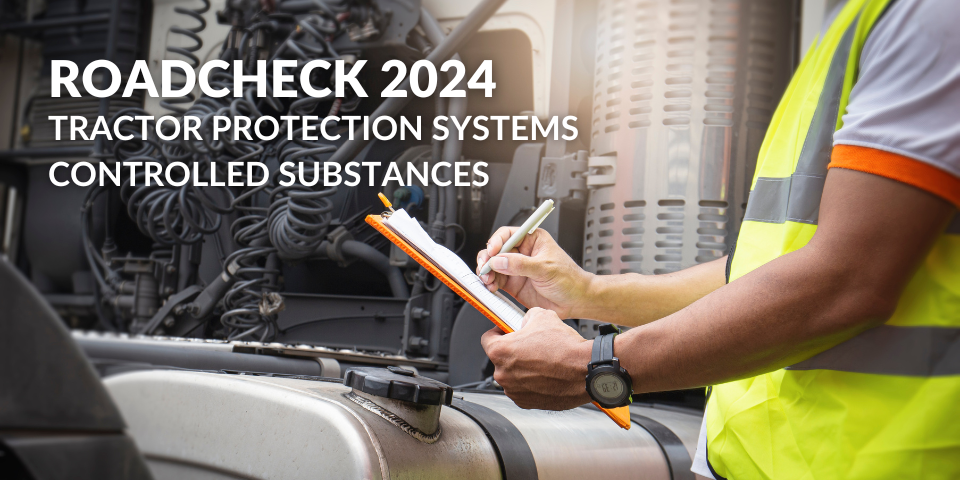Truck Topics

Roadcheck 2024: What to Prepare For
Each year, the CVSA (Commercial Vehicle Safety Alliance) holds numerous inspection and enforcement events throughout the United States, Canada, and Mexico intended to improve highway safety by cracking down on vehicle and driver violations.
The International Roadcheck is scheduled for May 14th through the 16th, 2024. Roadcheck is the largest targeted enforcement program aimed at commercial motor vehicles in the world. Since it began in 1988, roadside inspections conducted during International Roadcheck have numbered more than 1.4 million. Roadcheck also provides an opportunity to educate the transportation industry, as well as the general public, about the importance of safe commercial vehicle operations and the roadside inspection program.
Roadcheck Focus
This year, inspectors during International Roadcheck will focus on tractor protection systems and alcohol and controlled substance possession.
CVSA-certified law enforcement personnel will inspect commercial motor vehicles and drivers at weigh and inspection stations, temporary sites, and mobile patrols. Data from the 72 hours of International Roadcheck will be collected and the results will be released later in the summer.
Last year, brake issues were the top Roadcheck out-of-service violation.
Each year, Roadcheck will place a special emphasis on a specific category of violations. This year, there will be two focus areas – tractor protection systems and alcohol and controlled substance possession. For inspections in the U.S., there is also going to be an additional emphasis on prohibited drivers within the Drug and Alcohol Clearinghouse.
Tractor Protection Systems
A commercial motor vehicle’s tractor protection system consists of a tractor protection valve, trailer supply valve and anti-bleed back valve. All of these valves should be properly tested during a driver’s pre- and post-trip inspections, as well as an inspector’s roadside inspection.
During the inspection of tractor protection system components, the inspector will:
- Listen and/or feel for leaks from both air lines.
- Direct the driver to release all brakes by pressing dash valves.
- Have the driver carefully remove the gladhands and allow air to escape.
- Listen and/or feel for any leaking air at the gladhand couplers on the trailer.
- Ensure the air stops leaking from the supply line with at least 20 psi remaining.
- Request a full-service brake application from the driver.
CVSA has chosen to focus on these critical vehicle components because they may often be overlooked during pre- and post-trip and roadside inspections. Drivers can find an inspection bulletin from CVSA (here), outlining the steps on how to properly check tractor protection systems.
Commercial Driver Drug and Alcohol Use
CVSA also believes controlled substance and alcohol possession & use remains a significant concern for motor carriers, drivers, and the general public. The number of prohibited drivers listed in the U.S. Drug and Alcohol Clearinghouse (DAC) has been steadily increasing.
Motor carriers are reminded to establish and strictly enforce clear policies to prevent controlled substance and alcohol possession or use in the workplace.
In addition, U.S. motor carriers should regularly check the Drug and Alcohol Clearinghouse to ensure their drivers are not in any current prohibited status.
The yearly Roadcheck provides opportunities for the public, and especially the trucking industry, to be educated about the importance of safe freight-hauling operations and the North American Standard Inspection Program.
As a commercial driving professional, it’s extremely important to not only stay informed of blitzes and road-side checks such as these, but in an effort to avoid any type of violations it’s also best to stay in compliance and remain prepared.
